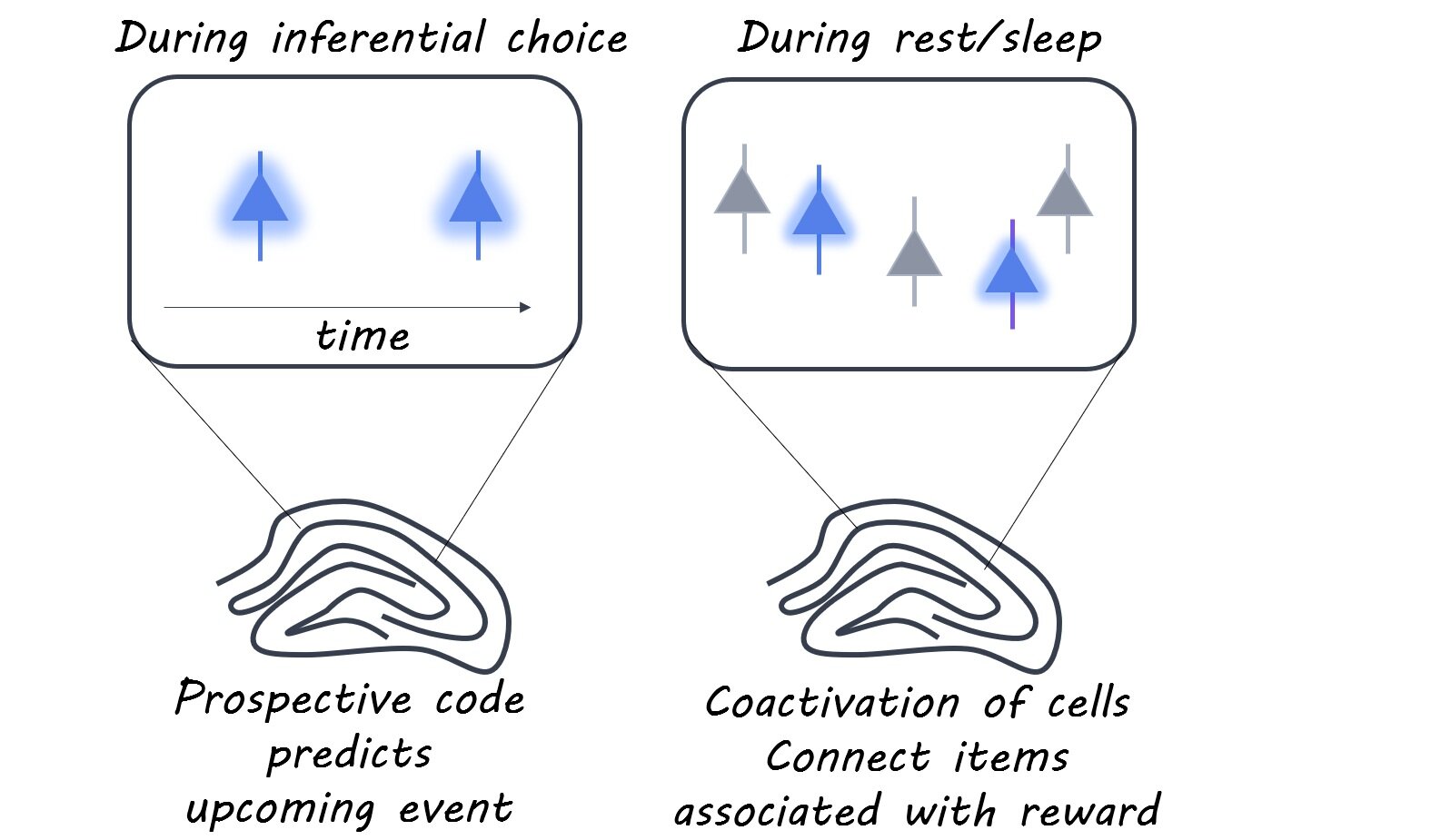Neuronal Computation Underlying Inference in the Brain
Post by Cody Walters
What’s the science?
Decisions often require that we infer relationships we have not directly experienced. While the ability to successfully perform inferential reasoning is critical for adaptation and survival, how the brain links multiple distinct events to guide behavior and accurately predict outcomes remains an open question. This month in Cell, Barron et al. used a cross-species approach to examine the neuronal computation underpinning inference in mice and humans.
How did they do it?
The authors studied both humans and mice as they performed an inference task. The task involved an observational learning phase (pairing a tone with a visual cue), a conditioning phase (pairing a visual cue with an outcome), and an inference phase (during which the subjects were exposed to one of the tones from the observational learning phase and had to infer the outcome). Mice were shown visual cues consisting of two light configurations and received either sugar water (rewarding outcome) or water (neutral outcome). During the task, the authors recorded neural activity from the mice in the dorsal hippocampus using tetrodes.
In humans, the task was performed in a virtual reality setting while participants were scanned with fMRI. The visual cues consisted of image patterns on a wall, and they received either coins with monetary value (rewarding outcome) or wood-chips with no monetary value (neutral outcome). The task, therefore, had two cue sets: the set of auditory and visual cues associated with a rewarding outcome and the set of auditory and visual cues associated with a non-rewarding outcome. Inference trials in which the subjects correctly inferred from the tone that they would be rewarded were called ‘correctly inferred trials.’
What did they find?
The authors found increased BOLD activity in the human hippocampus during correctly inferred trials. Using optogenetics in mice, the authors found that silencing activity in the mouse dorsal hippocampus during the inference phase (but not the conditioning phase) reduced reward-seeking behavior. These data suggest that the hippocampus plays an important role in inference. The authors then showed that the mouse hippocampus represents each of the task cues (i.e., the tones, visual stimuli, and outcomes) in a largely independent, non-overlapping manner. Next, the authors used representational similarity analysis (a method for determining how similar two neural representations are to one another) in both humans and mice to show that, on correctly inferred trials, the pattern of hippocampal activity during the tone predicted the pattern of hippocampal activity seen during that tone’s associated visual cue (from the observational learning phase). This implies that the tone elicited a prospective representation of that tone’s associated visual cue only when subjects correctly inferred the outcome of the trial.
Interestingly, the authors found that neither humans nor mice exhibited hippocampal representations of the outcome during tone presentation. In order to determine where in the brain the outcome was being represented, the authors looked for brain regions in human subjects that significantly encoded the outcome during the presentation of the auditory cue in the inference phase of the task. They found that the medial prefrontal cortex and the midbrain (a site containing reward-sensitive dopaminergic neurons) represented the inferred outcome. Finally, the authors showed that tone- and outcome-encoding cells in the hippocampus of mice were coactive during sharp wave-ripples. The authors further demonstrated that the ordering of these bursts of neuronal activity was temporally reversed (i.e., outcome-encoding cells fired before tone-encoding cells), a phenomenon known to occur during the replay of spatial trajectories nested within sharp wave-ripples. These results highlight sharp wave-ripples as a possible mechanism for bridging the gap between cues in inferring relationships.
What’s the impact?
This study showed that 1) the hippocampus computes a prospective code that binds associated memories, 2) the midbrain and medial prefrontal cortex, but not the hippocampus, represent imagined outcomes during inference, and 3) that inferred relationships are represented during hippocampal sharp wave-ripples. These data outline the functional anatomy and neuronal computation that support inference in the mammalian brain.
Barron et al. Neuronal Computation Underlying Inferential Reasoning in Humans and Mice. Cell. (2020). Access the original scientific publication here.


